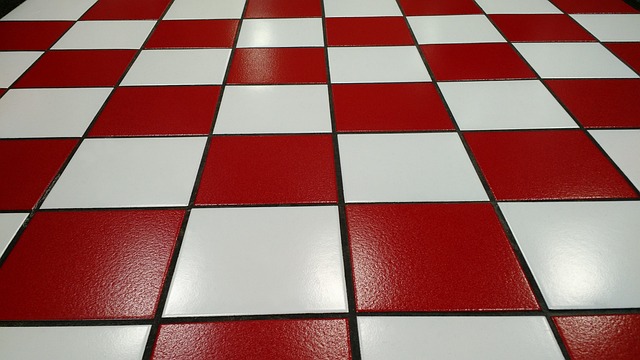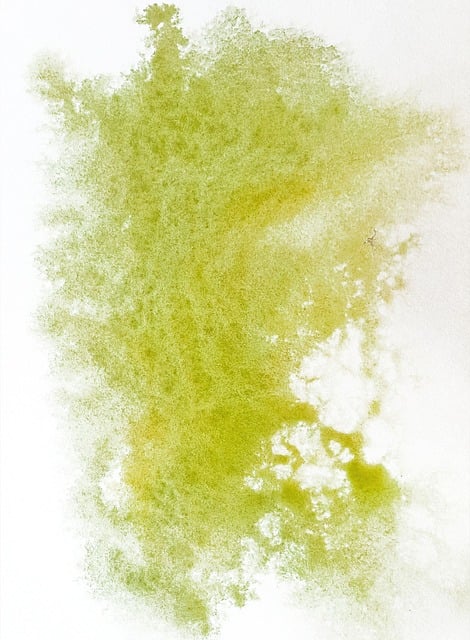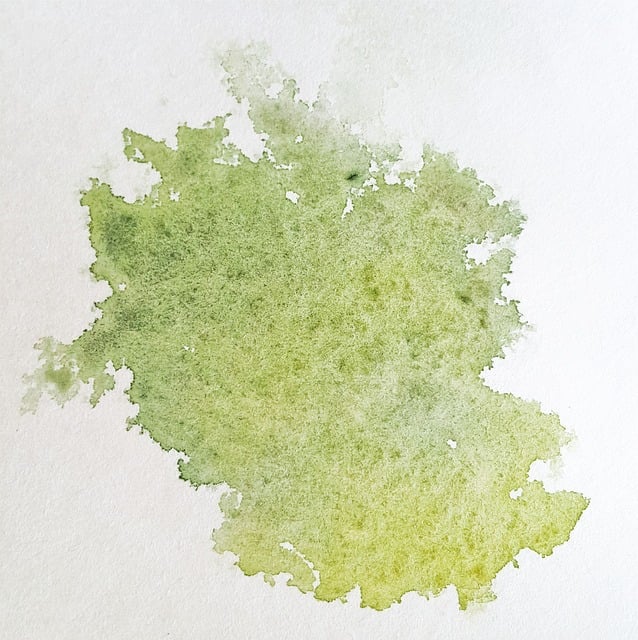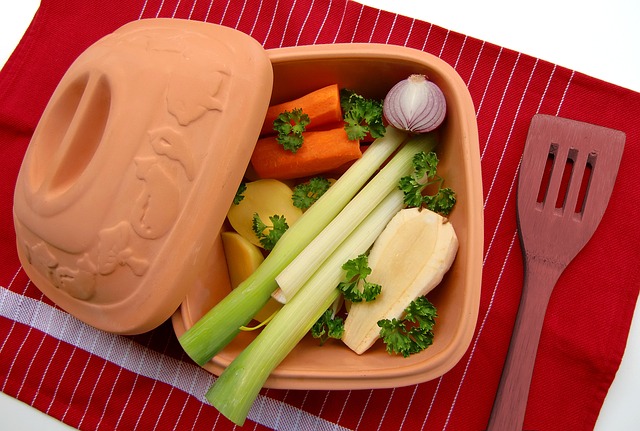Grout stains require specific removal techniques based on severity. Prepare protective gear, clear space, and mix cleaning solutions before tackling stains. Use tools like a grout brush, detergent, baking soda, vinegar, lemon juice, or steam cleaners for effective stain removal. Implement regular maintenance with sweeping, sealing, and pH-neutral cleaners to prevent future staining.
Tired of unsightly grout stains ruining your tile’s aesthetic appeal? Discover effective deep cleaning methods to remove even the most stubborn marks. This comprehensive guide covers everything from understanding grout stain causes to eco-friendly solutions and advanced cleaning techniques, like steam cleaning. Learn essential aftercare tips and prevention strategies to keep your grout lines looking fresh and clean. Take control of your tiled spaces with these powerful stain removal tactics.
Understanding Grout Stains: Common Causes and Types

Grout stains can range from mild discolourations to stubborn, deep-seated marks that compromise the aesthetics of your tiled surfaces. Understanding what causes these stains is the first step in effectively removing them. Common causes include everyday substances like dirt, grease, and beverages, which can quickly adhere to grout lines. Over time, moisture and lack of cleaning contribute to the growth of mould and mildew, further discolouring the grout.
Different types of grout stains require distinct removal techniques. For example, oil-based stains often leave a greasy residue that calls for specific solvents, while mineral deposits from hard water can be more stubborn and may necessitate the use of acidic cleaners. Removing stains from grout lines involves careful consideration of these variations to ensure optimal results without damaging the grout or surrounding tiles.
Prepare Your Space: Safety Measures Before Starting

Before you begin deep cleaning, it’s crucial to prepare your space and take necessary safety measures. Protect yourself by wearing gloves, goggles, and a mask to avoid skin irritation or inhalation of chemicals. Ensure proper ventilation in the room to prevent the buildup of fumes. Clear the floor area surrounding the grout lines to be treated, moving furniture or other obstacles that might get in the way. Prepare a cleaning solution tailored for removing stains from grout lines; this could involve mixing a mild bleach and water solution or using specialized grout cleaners available in hardware stores. Always follow product instructions for proper dilution and application.
Essential Tools and Materials for Deep Cleaning

When it comes to deep cleaning grout stains, having the right tools and materials is crucial for achieving optimal results. For effective stain removal from grout lines, gather a few essential items. Start with a high-quality grout brush designed specifically for navigating tight spaces. This tool will allow you to apply cleaner directly into the grout without causing damage. Additionally, invest in a reliable cleaning solution tailored for grout and tile surfaces. Look for products that target stubborn stains and are safe for various types of grout.
Don’t forget protective gear, such as gloves and goggles, to safeguard your hands and eyes from harsh chemicals. A bucket for mixing cleaner solutions and an old cloth or sponge for testing the cleaning agent’s strength on a small, inconspicuous area are also valuable additions to your kit. Proper preparation ensures efficient stain removal without causing further damage or discolouration to your grout lines.
Step-by-Step Guide to Removing Mild Stains

Removing mild stains from grout lines can be a straightforward process if you take the right approach. Start by vacuuming or sweeping the floor to remove any loose debris or dirt. This step is crucial as it prevents particles from embedding deeper into the grout, making future cleaning more challenging. Next, mix a solution of warm water and mild detergent—a few drops should suffice. Dip a soft-bristled brush into the solution and gently scrub the stained areas. For tougher stains, apply a small amount of baking soda directly to the stain, let it sit for a few minutes, then scrub away. Rinse the grout thoroughly with warm water afterward.
After scrubbing, use a clean, damp cloth or sponge to wipe down the grout lines. Ensure you remove all soap residue to prevent water stains and encourage dirt accumulation. If the stain persists, consider using a commercial grout cleaner or a mixture of vinegar and water for more persistent cases. Always spot-test any cleaning solutions on a small, inconspicuous area first to ensure they don’t damage or discolour your grout.
Tackling Tougher Stains: Chemical Solutions

When it comes to tackling tougher grout stains that simply won’t budge with regular cleaning, chemical solutions can be a game-changer. These powerful tools are designed specifically to penetrate and dissolve stubborn debris, making them ideal for removing stains from grout lines. Many commercial cleaners offer specialized formulas tailored to target and eliminate various types of stains, from mineral deposits to mold and mildew.
Applying these chemicals is often a multi-step process. First, you’ll need to protect your skin and breathing with gloves and a mask. Then, carefully follow the manufacturer’s instructions for application, allowing the solution to sit for the recommended time before rinsing thoroughly. It’s important to note that while chemical solutions are effective, they should be used sparingly and according to safety guidelines to avoid potential damage or irritation.
Natural Cleaning Alternatives for Eco-Friendly Grout Refresh

When it comes to refreshing your grout lines, there are eco-friendly alternatives that can help remove stains effectively without harsh chemicals. Baking soda and vinegar are popular choices; their natural cleaning power is well-documented. To create a powerful cleaner, mix equal parts baking soda and white vinegar, forming a paste. This mixture can tackle various stains, from mild to stubborn. Apply the paste directly onto the discolored grout lines and let it sit for about 15 minutes before scrubbing gently with a soft-bristled brush or an old toothbrush.
Another natural option is lemon juice, known for its antibacterial properties and ability to bleach without damaging surfaces. Cut a lemon in half and rub it directly over the stained grout. Leave it on for a few minutes, then rinse thoroughly with warm water. For tougher stains, mix lemon juice with baking soda to create a paste and follow the same scrubbing technique mentioned above. These natural methods not only promote a healthier environment but also ensure your grout lines look sparkling clean without any toxic residue.
Steam Cleaning: A Powerful Method for Grout Restoration

Steam cleaning is a highly effective and powerful method for deep cleaning grout stains, offering an eco-friendly solution for those seeking to restore their grout lines. The process involves injecting high-pressure steam into the grout, which helps to loosen and break down dirt, grease, and other debris that have penetrated the tiny crevices. This aggressive yet gentle approach is ideal for removing stubborn stains without causing damage to the grout or surrounding tiles.
By using steam, you can effectively eliminate the need for harsh chemicals, making it a safer option for homes with children or pets. The heat from the steam also helps to sterilize the area, killing bacteria and mold that might be present, leaving your grout lines not only clean but also hygienic. This method is particularly useful for extensive grout cleaning projects as it can quickly and efficiently restore the appearance of tired, stained grout lines.
Aftercare Tips: Maintaining Clean and Stain-Free Grout Lines

After successfully deep cleaning your grout lines, it’s crucial to implement maintenance practices that prevent future staining. Regular vacuuming or brushing helps eliminate surface dirt and dust particles that could lead to stain reoccurrence. Use a soft-bristled brush or vacuum attachment designed for tile and grout to gently sweep away debris without causing damage.
Additionally, sealing your grout lines with a high-quality silicone or polyurethane sealer will create a protective barrier against moisture and stains. Apply the sealer according to the manufacturer’s instructions, ensuring even coverage along each grout line. This simple step can significantly extend the life of your clean grout, saving you time and effort in the long run when it comes to removing stains from grout lines.
Prevention Strategies: Keeping Grout Looking Like New

Regular cleaning and maintenance are key to preventing grout stains and keeping your spaces looking fresh. Start by sweeping or vacuuming floors regularly to remove dirt and debris that can lead to staining. Targeting grout lines with a gentle, pH-neutral cleaner after each cleaning session helps to dissolve any trapped residue before it hardens into stains.
Additionally, sealing the grout after deep cleaning can create a protective barrier against future stains. Choose a sealer designed for ceramics and masonry, apply it evenly, and follow the manufacturer’s instructions for best results. This simple step can make all the difference in keeping your grout lines looking like new, saving you time and effort in the long run when it comes to removing stains from grout lines.
